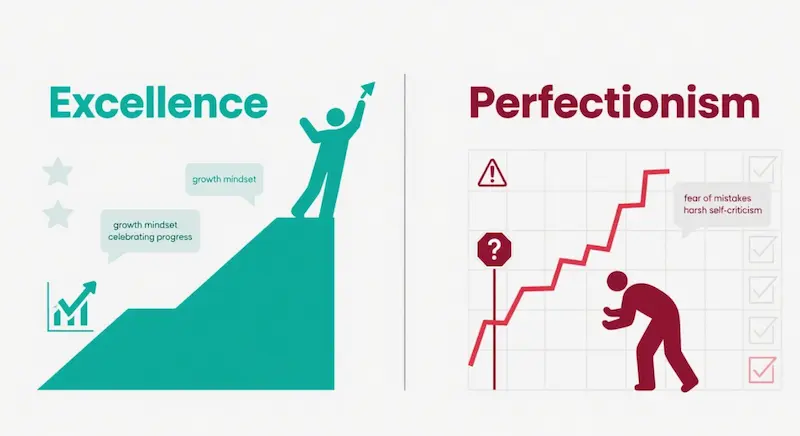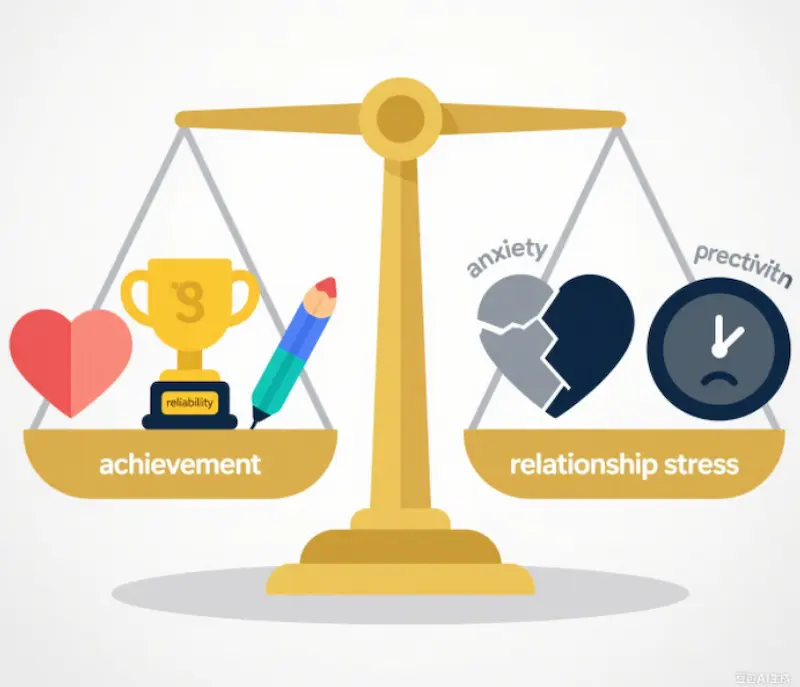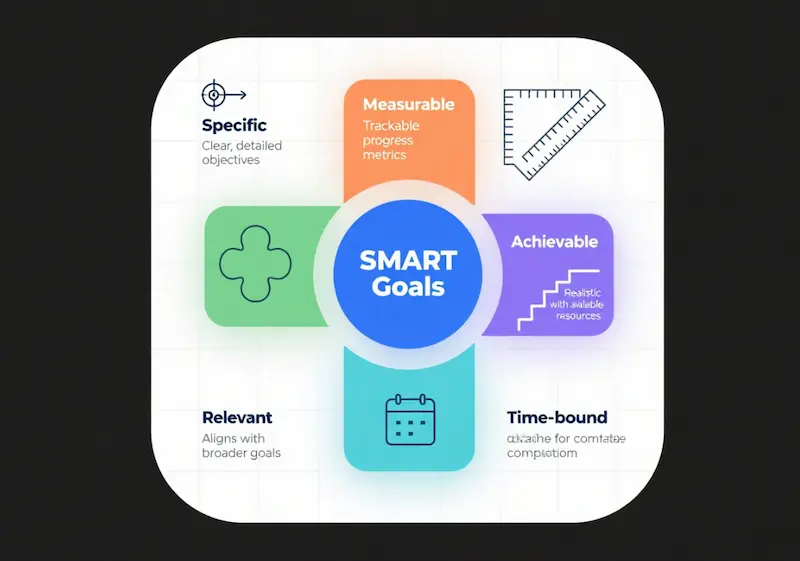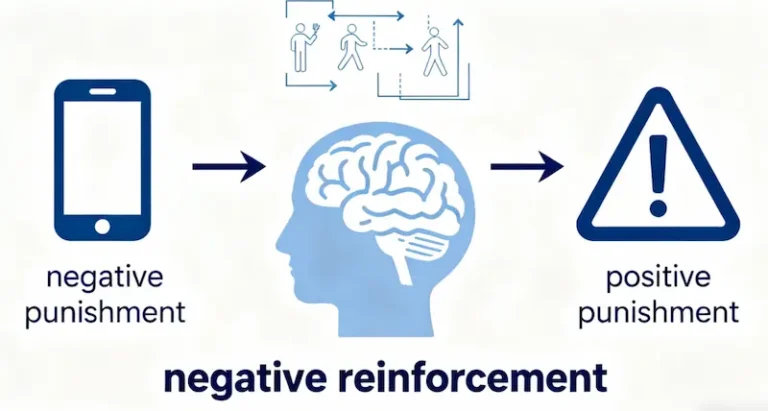Perfectionism: What It Is, Its Psychological Causes, and How to Stop Being a Perfectionist

Table of Contents
Do you know someone who obsesses over every detail—maybe a coworker who rewrites a report 10 times, or a friend who cancels plans because their outfit “isn’t right”? Or perhaps you’re the one who stays up late fixing a tiny typo in a work email, even though no one else would notice. That’s perfectionism at play, and while it might seem like a “good” trait, it often hides a painful truth: for many people, excessive perfectionism is less about “doing well” and more about fear of failure, judgment, or not being “enough.”
In this guide, we’ll break down what perfectionism really is (spoiler: it’s not just “being detail-oriented”), explore why it develops, and share science-backed strategies to keep it from taking over your life. Whether you’re a self-proclaimed perfectionist or just curious about the trait, this article will help you navigate the line between striving for excellence and getting trapped in an endless cycle of self-criticism.
What Is Perfectionism, Exactly?
At its core, perfectionism is more than just wanting to do a good job—it’s a psychological pattern where someone sets impossibly high standards for themselves, others, or their surroundings, and feels intense distress when those standards aren’t met. According to the American Psychological Association (APA), perfectionism is classified as both a personality trait and a thought pattern, and it often involves three key behaviors:
- Obsessing over small flaws (e.g., a misplaced comma in a presentation, a slightly uneven haircut) that others would ignore.
- Avoiding tasks entirely because of fear of “not doing them perfectly.”
- Feeling guilty or ashamed even when they achieve a goal—focusing only on what “could have been better” instead of celebrating success.
Let’s look at common examples that resonate with readers:
- A college student spends 12 hours revising a 5-page essay for a literature class, missing a friend’s birthday dinner, because they’re convinced the thesis statement “isn’t sharp enough.” Even after getting an A, they fixate on the one comment their professor made about “tightening the conclusion.”
- A marketing professional delays submitting a client proposal for 3 days, adding unnecessary graphs and edits, because they’re scared the client will think it’s “lazy.” By the time they send it, the client has already followed up twice, creating stress for everyone involved.
- A new parent spends hours organizing their baby’s nursery, throwing away perfectly good onesies because they “don’t match the color scheme.” They feel anxious every time a toy is out of place, convinced they’re “failing” at parenting if the space isn’t flawless.

The key difference between perfectionism and “striving for excellence”? Excellence focuses on growth (“I want to improve”) while perfectionism focuses on judgment (“I need to be perfect to be worthy”). Excellence allows for mistakes; perfectionism punishes them.
What Causes Perfectionism? (3 Key Psychological Factors)
Perfectionism doesn’t develop overnight—it’s shaped by a mix of family, society, and personal traits. Let’s break down the most common causes, with examples that reflect American culture and experiences.
1. Family Environment and Parental Expectations
For many people, perfectionism starts at home. When parents set overly strict standards or tie love and approval to achievement, kids learn to associate “being good” with “being perfect.” This isn’t about parents being “mean”—often, they’re well-meaning, but their focus on success can have unintended consequences.
Take Sarah, a teacher from Chicago. As a kid, she scored a 1480 on her SAT (out of 1600)—a score that would get her into most top colleges. When she showed her parents, instead of celebrating, they said, “Why didn’t you get those last 20 points? You could have tried harder.” For Sarah, that moment taught her: “Even my best isn’t enough. I need to be perfect to make them proud.” By high school, she was skipping lunch to study and having panic attacks before tests—all because she feared disappointing her parents.
Research from the University of California, Berkeley confirms this: kids who grow up with “conditional approval” (love that’s tied to grades, sports, or behavior) are 3x more likely to develop perfectionism than kids who receive “unconditional love.”
2. Societal Pressure and Social Media
We live in a culture that often glorifies “perfection”—think of the curated lives on Instagram (perfect vacations, perfect meals, perfect careers), the “hustle culture” that says “you need to be productive 24/7,” and the media’s focus on “overnight successes” who seem to have it all figured out. This constant exposure to “idealized” lives makes many people feel like their own lives are “not good enough”—and perfectionism becomes a way to keep up.
A 2023 study by Pew Research Center found that 62% of U.S. adults aged 18–34 feel “pressure to present a perfect life on social media.” For example, Mike, a 30-year-old software engineer, spends 2 hours every weekend taking photos of his “healthy meals” (even though he usually eats cereal for breakfast during the week) and editing his gym posts to make his workouts look more intense. He says, “If I post a ‘messy’ day, I worry people will think I’m lazy or unmotivated. I need to look like I have my life together.”
This pressure isn’t just about social media, either. Workplaces often reward “overachievers” who take on extra projects and work late, sending the message that “more is better” and “good enough is never enough.” Over time, this can turn healthy ambition into crippling perfectionism.
3. Personality Traits
Some people are more prone to perfectionism because of their innate personality. The Big Five Personality Traits (a widely used psychological framework) identifies two traits that often overlap with perfectionism:
- Conscientiousness: People who are highly conscientious are organized, responsible, and detail-oriented—traits that can lead to excellence. But when taken to an extreme, they become fixated on “getting every detail right” and can’t let go of small mistakes.
- Neuroticism: People who are high in neuroticism are more sensitive to stress, anxiety, and negative feedback. They often fear judgment, so they use perfectionism as a “shield”—if they’re perfect, no one can criticize them.
For example, Lisa, a 35-year-old graphic designer, is highly conscientious and neurotic. She spends hours adjusting the spacing between letters in a logo, even though her client already approved it. “I’m scared that if I miss something, the client will think I’m unprofessional,” she says. “I’d rather work 10 extra hours than risk getting a negative email.”
While personality traits play a role, they’re not set in stone—with practice, even highly conscientious or neurotic people can learn to manage perfectionism.
How to View Perfectionism Realistically
The first step to managing perfectionism is to stop seeing it as “either good or bad.” Like most things in life, it has two sides—and understanding both can help you use its strengths without letting its weaknesses hurt you.

The Two Sides of Perfectionism: Pros and Cons
Perfectionism can be a strength when it’s “healthy”:
- It can drive you to achieve goals you never thought possible. For example, Serena Williams, one of the greatest tennis players of all time, has spoken about her perfectionist streak—she spends hours practicing her serve, even when she’s already at the top of her game. This drive helped her win 23 Grand Slam titles.
- It can make you reliable and trustworthy. A perfectionist nurse, for example, will double-check medication doses to ensure patient safety—a habit that saves lives.
- It can fuel creativity. Many artists, writers, and musicians use perfectionism to refine their work: J.K. Rowling revised the first chapter of Harry Potter and the Philosopher’s Stone 15 times before sending it to publishers, and the result was a book that’s sold over 500 million copies worldwide.
But excessive perfectionism is harmful:
- It harms your mental health. The APA links chronic perfectionism to higher rates of anxiety, depression, and burnout. A 2022 study in the Journal of Clinical Psychology found that perfectionists are 2x more likely to develop panic disorder than non-perfectionists.
- It slows you down. Perfectionists often procrastinate because they’re scared of “not doing it right.” For example, a freelance writer might spend days researching a blog post but never start writing—all because they want “all the facts first.” By the time they finish, the client has moved on.
- It damages relationships. Perfectionists often set high standards for others, too. A perfectionist partner might criticize their significant other for “not folding laundry correctly” or “cooking the steak wrong,” leading to resentment and conflict.
Embracing Imperfection as a Normal Part of Life
One of the hardest (but most rewarding) steps to managing perfectionism is learning to accept that imperfection is normal—and even beautiful. Think about some of the most beloved things in American culture:
- Bob Ross’s paintings: The famous painter was known for his “happy accidents”—smudges or unexpected brushstrokes that he turned into trees, clouds, or mountains. He once said, “We don’t make mistakes, just happy little accidents.” His paintings are loved not because they’re perfect, but because they’re warm and human.
- Apple’s products: The first iPhone, released in 2007, had flaws—it didn’t have a front-facing camera, couldn’t run third-party apps, and had a short battery life. But instead of waiting for “perfection,” Apple released it, listened to feedback, and improved it over time. Today, the iPhone is one of the most successful products in history—all because Apple embraced imperfection as part of the process.
- Your favorite childhood memories: Chances are, your best memories aren’t of “perfect” moments—they’re of messy ones: baking cookies with your grandma that turned out lopsided, playing soccer with friends and tripping over the ball, or having a picnic that got rained on. Those moments are special because they’re real, not perfect.
Embracing imperfection doesn’t mean “settling for less”—it means recognizing that growth happens when you’re willing to make mistakes. As the author Brené Brown (a leading researcher on vulnerability) says, “Imperfection is not our personal failure; it’s the human condition.”
How to Stop Being a Perfectionist: 3 Practical Strategies
If you’re tired of letting perfectionism control your life, these science-backed strategies can help. They’re simple, actionable, and tailored to fit busy American lifestyles—no fancy tools or expensive therapy required (though therapy can help if you’re struggling with severe anxiety).

1. Adjust Your Mindset and Set Realistic Goals
Perfectionists often set goals that are impossible to achieve (“I need to be the top performer at work this quarter”)—which sets them up for failure. Instead, try setting “SMART goals”: Specific, Measurable, Achievable, Relevant, and Time-bound.
Let’s use an example: If you want to learn a new skill (like graphic design), a perfectionist goal might be, “I need to master Photoshop in 1 month and create professional-level designs.” A SMART goal would be, “I’ll take 1 Photoshop class per week for 3 months, and by the end, I’ll create 1 simple design for my friend’s small business.”
Why this works: SMART goals are realistic, so you’re more likely to achieve them—and each small win builds confidence. When you finish that first class or create that first design, you’ll think, “I did this—and it’s okay that it’s not perfect.”
Another tip: Give yourself a “good enough” deadline. For example, if you’re writing a work email, tell yourself, “I’ll spend 10 minutes drafting it, read it once, and send it.” This prevents you from getting stuck in an endless cycle of editing.
2. Shift Your Focus to the Process, Not Just the Outcome
Perfectionists are obsessed with “the end result”—but the truth is, most of life’s value comes from the process. For example, if you’re training for a 5K, a perfectionist would fixate on “running it in under 30 minutes.” But the real value is in the early mornings you spent jogging, the way your stamina improved, and the friends you made at the running group.
Here’s how to shift your focus:
- After completing a task, ask yourself: “What did I learn?” instead of “Did I do it perfectly?” For example, if you gave a presentation at work and forgot one slide, ask, “What can I do next time to remember my notes?” (like using cue cards) instead of, “I messed up the whole presentation.”
- Celebrate small steps. If you’re working on a project, take 5 minutes to acknowledge each progress point: “I finished the research—great job!” or “I wrote the first draft—way to go!” This trains your brain to value effort over perfection.
A study from Harvard Business School found that people who focus on the process are more likely to stick with goals and less likely to feel anxious than people who focus on the outcome. It’s a simple shift, but it can make a big difference.
3. Practice Self-Acceptance and Self-Compassion
Perfectionists are often their own harshest critics—they call themselves “lazy” for making a mistake or “stupid” for not knowing something. But self-criticism only fuels perfectionism; self-compassion is what breaks the cycle.
Self-compassion (a term coined by psychologist Kristin Neff, a professor at the University of Texas at Austin) means treating yourself with the same kindness you’d give a friend. For example, if your friend forgot a deadline, you’d say, “It happens—let’s figure out how to fix it.” But if you forgot a deadline, you might say, “I’m so irresponsible—I always mess things up.” Self-compassion asks you to swap that harsh voice for a kind one.
Here are 3 ways to practice self-compassion today:
- When you make a mistake, say this out loud: “This is a hard moment, but everyone makes mistakes. I’m doing my best.”
- Write down 3 things you did well each night—even small ones (e.g., “I helped a coworker with their project” or “I took a 10-minute walk to calm down”).
- Give yourself permission to “be human.” If you’re feeling overwhelmed, take a break—drink a cup of coffee, watch a 5-minute funny video, or call a friend. Perfectionists often think “taking breaks is lazy,” but rest is essential for mental health.
Neff’s research shows that people who practice self-compassion are less likely to experience anxiety and depression—and more likely to let go of perfectionism. It’s not about “being soft” on yourself; it’s about being fair.

Final Thoughts on Perfectionism
Perfectionism is a complex trait—It can push you to achieve great things, but it can also hold you back from living a happy, fulfilling life. The key isn’t to “stop being a perfectionist” entirely; it’s to learn to control it, so it works for you, not against you.
By understanding the causes of your perfectionism (whether it’s family, social media, or your personality), embracing imperfection as part of life, and using practical strategies like setting SMART goals and practicing self-compassion, you can break free from the cycle of self-criticism and anxiety. Remember: You don’t need to be perfect to be worthy—you’re already enough, just as you are.
Call to Action (CTA)
Do you struggle with perfectionism? Share your story in the comments below—whether it’s a time perfectionism held you back or a strategy that helped you overcome it. Your experience could help someone else feel less alone.
If you found this article helpful, share it with a friend or family member who might be dealing with excessive perfectionism—together, we can change the narrative that “perfect is better.”






